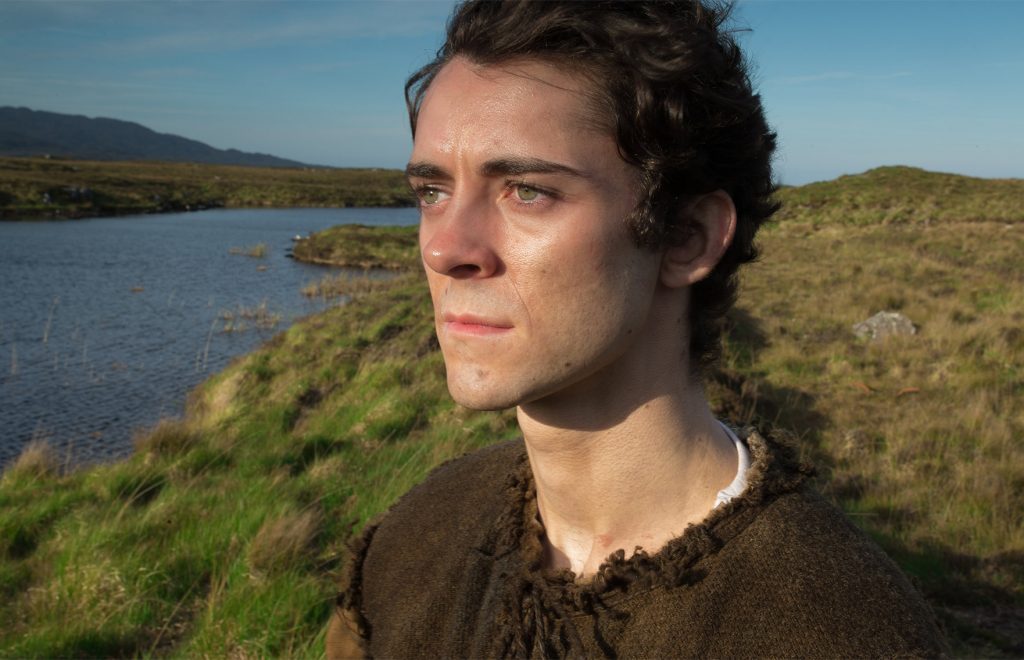
Saint Patrick,
Patron Saint of Ireland

About
Patrick of Taberniea was from a Roman Atharim family who lived in the 5th century AD. His mother, Conchessa, was the niece of an Atharim priest, St. Martin of Tours, and from a notable Atharim family in northern Italy. His father, Calporn was a local magistrate and Atharim hunter. They moved from Italy to Britain when Patrick was a small child, expanding the Roman Atharim presence to the province.
Abduction
When he was 16 years old, he was captured by pirates and abducted to Ireland along with two female Atharim hunters, Darerca and Lupida where they were separated and sold as slaves. The fate of the two Atharim women are unknown. What Patrick found in Ireland astounded him. The chieftain who purchased him was an Atharim who exploited his knowledge and skill to conquer the locals and enslave native naga populations. It wasn’t until Patrick was forced to work as a shepherd-slave in grueling conditions that he realized the extent of the Naga abuses.

The life of a shepherd-slave could not have been a happy one. Ripped out of civilization, Patrick had for his only protector a man who did not hold his own life highly, let alone anyone else’s. The work of such shepherds was bitterly isolated, months at a time spent alone in the hills. The occasional contacts, which one might normally seek out, could bring their own difficulties…
Like many others in impossible circumstances, he began to pray. He had never before paid attention to the teachings of his religion: he tells us that he didn’t really believe in God, and he found priests foolish. But now, there was no one to turn to but the God of his parents and the few bedraggled naga he encountered.


Escape
After six years in captivity, his faith expanded until one day a vision came to him in a dream.
“Your hungers are rewarded. You are going home. Look, your ship is ready.”
Voice from the dream while Patrick was enslaved in Ireland

Patrick immediately set out on foot and traversed 200 miles toward the coast as fugitive slave. He intended to liberate some naga allies, but upon reaching the sea, they were refused passage on any boat. After waiting three days desperately praying for help, a captain suddenly appeared who would ferry him back to Britain. The ship was wrecked on the journey back, and when they landed, it was in a desolate, barren landscape. The Irish sailors mocked his faith, but Patrick was confident in the visions from the dream. The taunting continued, but when Patrick said to pray and trust in God, suddenly a herd of wild pigs emerged. Further strange incidents occurred and all survived the journey back to civilization.
Eventually, Patrick was reunited with his family, including his mother and father. The homecoming was difficult, though. He was hardened physically and psychologically by indescribable experiences, hopelessly behind his peers in education, and was not eligible for strategic marriages. He remained home with his parents until yet another dream spurned him to depart.
And there I saw a vision during the night, a man coming from the west; his name was Victorious, and had with him many letters; he gave me one to read, and in the beginning of it was a voice from Ireland. I then thought it to be the voice of the inhabitants of Focluit Wood, adjoining the western sea; they appeared to cry out in one voice, saying, `Come to us, O holy youth, and walk among us.’ With this I was feelingly touched, and could read no longer. I then awoke.
From the writing of St. Patrick, dreaming of his destiny to liberate the oppressed in Ireland.
Ordained

He tried to explain the horrors he witnessed in Ireland exacted by the corrupt Atharim and their control of the naga. To much protest, Patrick left his family to travel to Gaul where he entered service in the Catholic Church with the blessing of his uncle, St. Martin of Tours, Atharim family lineage, and newfound and deep faith in his calling, he was soon ordained as a Bishop. He was offered the opportunity to remain in Gaul, but he felt the deep pull to return to Ireland. Before leaving, he confessed a powerful sin that haunted him from his youth. The sin was unknown, but apparently so great, that his confessor revealed it publicly. For this, Patrick authored his famous work, Confession.
Return to Ireland
When Father Patrick returned to Ireland, he was ready to confront the corrupt Atharim he witnessed when he was a captive, but his reception was quite cold. He fled north, seeking the famed treasures of the Tuatha Dé Danann, weapons of the gods that were used by the Atharim ancestors to overthrow the pantheon of ancient rulers.
Finally, on Samhain, Patrick gathered loyal missionaries and the remaining naga and marched on site where the corrupt chieftains gathered to feast. A major battle took place during the rebellion, and the Atharim chieftains were finally driven out of Ireland.
To this day, St. Patrick is credited as driving all the snakes from Ireland. The island remains a sanctuary for Naga, who flourished in the absence of any Atharim oppression.



Legacy of St. Patrick
Himself exploiting his knowledge of the Atharim and his training as a priest, Patrick bequeathed the four treasures used in the overthrow of the Atharim abusers, to the Naga royal family for protection. Patrick continued to have prophetic dreams, and he preached tenets of love and faith all over Ireland until the end of his days.
Pope Patricus I

While the true history of St. Patrick is a tale hidden only to Atharim, Patrick is canonized as the Patron Saint of Ireland. St. Patrick touched the people through a deep respect and love for them and a culture he had come to embrace. in his time in Ireland St. Patrick changed the lives and futures of the people he had once walked among as a slave. The monasteries he founded or encouraged became centers of literacy and learning, sprawling universities devoted to knowledge, which would in time serve to collect and preserve the written record of western civilization after the fall of Rome.
It is said that St. Patrick’s deep faith, prophetic dreams, and mission were the virtues that inspired Philip Patrick Sullivan to chose the Papal name of Patricus I.
0 Comments